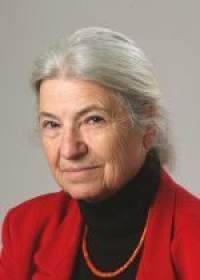
3:30 pm to 4:30 pm
Event Location: NSH 1305
Bio: Dr. Ruzena Bajcsy (“buy chee”) was appointed Director of CITRIS and professor of EECS department at the University of California, Berkeley on November 1, 2001. Prior to coming to Berkeley, she was Assistant Director of the Computer Information Science and Engineering Directorate (CISE) between December 1, 1998 and September 1, 2001. As head of National Science Foundation’s CISE directorate, Dr. Bajcsy managed a $500 million annual budget. She came to the NSF from the University of Pennsylvania where she was a professor of computer science and engineering since 1972. In 2004 she became a CITRIS director emeritus and now she is a full time NEC Distinguished professor of EECS. Dr. Bajcsy is a pioneering researcher in machine perception, robotics and artificial intelligence. She is a NEC Distinguished professor in the Electrical Engineering and Computer Science Department at Berkeley. She was also Director of the University of Pennsylvania’s General Robotics and Active Sensory Perception Laboratory, which she founded in 1978. Dr. Bajcsy has done seminal research in the areas of human-centered computer control, cognitive science, robotics, computerized radiological/medical image processing and artificial vision. She is highly regarded, not only for her significant research contributions, but also for her leadership in the creation of a world-class robotics laboratory, recognized world wide as a premiere research center.
Abstract: We shall review occulo-motoric control system of human for obtaining the necessary visual information for performing the given task. Based on these results we shall outline a possible engineering agenda lessons learned. The main argument here is that humans actively look not only see, that is there is control mechanism to obtain and extract the right information for given task. Finally we will show how respecting the structure of the human body one can model systematically the sequence of joints specific to given actions. Humans have several capabilities to control perception, action and interaction. This is the challenge for control community, how to model these processes.
At the end we will mention some open problems.
